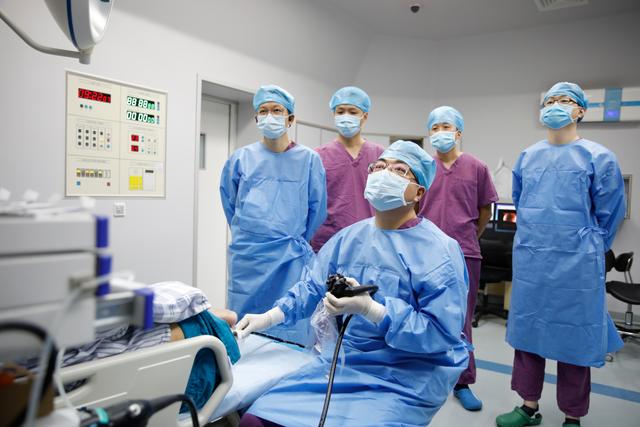During the scorching summer days, indulging in watermelon is inevitable. But should you spit out the seeds when eating watermelon? What are the consequences of not doing so?
Recently, a man in his thirties from Guangzhou, China, named Ashan, experienced abdominal pain on the lower right side after consuming watermelon without spitting out the seeds. The pain persisted for a week, prompting him to seek medical attention at a hospital. Reflecting on his diet from a week prior, he didn’t notice anything unusual but remembered the weather being particularly hot. He had eaten a large amount of watermelon in one sitting, swallowing the seeds along with it, stating, “I usually eat like this, thinking they will pass through my intestines and be expelled.”
After diagnosis, Ashan was confirmed to have appendicitis. Following surgical treatment by the doctors, Ashan successfully passed out dozens of watermelon seeds without having his appendix removed.
A man developing appendicitis from not spitting out watermelon seeds prompts a doctor’s reminder: Don’t overlook symptoms.
“Remember to spit out watermelon seeds when eating watermelon, or else they may enter the appendix,” remarked Guo Xuefeng, Director of Endoscopy Surgery at Zhongshan Sixth Hospital, sparking immediate attention from numerous social media users. It was then realized that many people eat watermelon in a similar manner to Ashan. “We found that Ashan’s intestines and cecum were anatomically normal, so the behavior of not spitting out watermelon seeds carries the risk of inducing appendicitis,” Guo Xuefeng explained. He added that the common advice from elders to spit out watermelon seeds to avoid stomach pain indeed holds some truth, as evidenced by Ashan’s case.
Guo Xuefeng further explained that the appendix is located in the lower right abdomen and resembles a small, elongated tail. It serves as both a digestive and lymphatic organ, possessing certain digestive and immune functions. Compared to other organs in the body, the appendix is highly susceptible to inflammation, commonly known as appendicitis. The narrow lumen of the appendix can easily become obstructed due to various reasons, leading to bacterial infection and displacement.
When it comes to appendicitis, most people immediately think of surgical removal and antibiotic treatment. However, surgery is an invasive treatment method that carries risks of postoperative complications such as wound infection, bleeding, postoperative intestinal adhesions, and intestinal fistulas. Moreover, the appendix plays an important role in the body, potentially having more functions that are currently unknown, so it is unwise to simply remove it without careful consideration.
Experts advise that for recurring lower right abdominal pain, a clear diagnosis should be made first, as not all pains are caused by appendicitis, avoiding unnecessary surgeries. For confirmed cases of appendicitis caused by foreign objects such as fecal stones, there is now a minimally invasive treatment known as Endoscopic Retrograde Appendicitis Therapy (ERAT). This method involves diagnostic insertion, irrigation, removal of fecal stones, dilation of the narrowed appendiceal lumen, and drainage of pus through an endoscope inserted into the cecum.
“This method is highly effective for appendicitis caused by fecal stones, as removing the stones can prevent recurrence, and it’s minimally invasive,” Guo Xuefeng explained. Since the introduction of this new technology at Zhongshan Sixth Hospital in August last year, over 80 cases of Endoscopic Retrograde Appendicitis Therapy have been performed, with patients retaining their appendices and experiencing good postoperative recovery.
